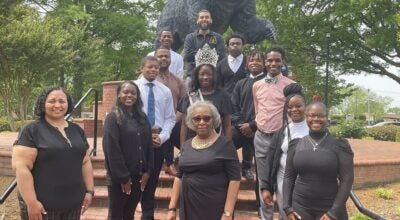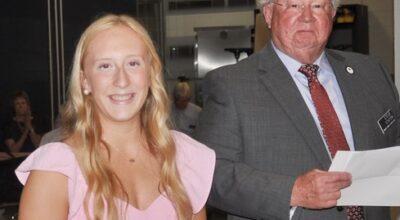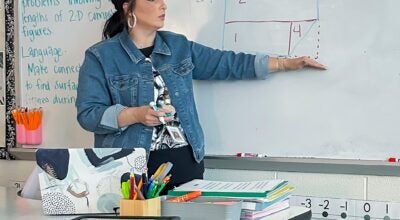Use of iPads in schools growing
Published 12:00 am Thursday, August 16, 2012
By Sarah Campbell
scampbell@salisburypost.com
When students head back to class later this month they’ll have more technology at their fingertips than ever before.
Phil Hardin, executive director of technology for the Rowan-Salisbury School System, said mobile devices are the latest trend. The district will have more than 7,500 of them in schools this year.
The school system already has iPod Touch devices in every school and the number of iPads will grow.
“The iPad’s interactive qualities provide students with a number of engaging learning opportunities while simultaneously allowing the students to work at their own pace,” Hardin said. “It’s important to individualize learning for students and the iPad is one technology tool that provides a means of teaching the basic curriculum while enhancing learning opportunities and individualizing student learning.”
The district launched iPad programs at four schools last year. Fifth-graders at Overton, eighth-graders at Knox and North, along with science classrooms at North Rowan High, used the devices daily.
That program, dubbed the 1:1 iPad project, will expand this fall to the same grades and subjects at North Rowan, Hanford-Dole, Hurley, Koontz, Isenberg, Knollwood, Landis, China Grove and Woodleaf elementary schools; Southeast Middle and every high school this fall.
Salisbury High School will also use the iPads in math classrooms.
The iPads were bought with district funds and grant dollars from the Robertson Family Foundation.
3D game development
Salisbury High will also receive new 3D game development software that will be used in the virtual reality computer lab.
Hardin said 3D virtual reality imaging and game creation are growing in a number of career fields.
“This software will allow students to learn how to program and create professional 3D games,” he said.
But just because a school isn’t getting the latest tech tools doesn’t mean students will be missing out, Hardin said.
“All schools have at least one iPod cart and most schools have added at least one iPad cart,” he said.
The district also has 11 activity buses with wireless Internet access, Hardin said. They are housed at North Rowan Middle, Knox Middle, Salisbury High and Carson High. There are also three for schools to check out from the transportation department.
The idea behind the buses is the give students a way to work on assignments and stay engaged while traveling to sporting events or taking field trips.
Technology tools
Hardin said the number of interactive whiteboards as has soared to more than 1,000 from just 36 in 2006, thanks to Superintendent Dr. Judy Grissom’s arrival that year.
“With her having a strong curriculum background and real understanding of how technology can be used to strengthen teaching and learning, the system saw an almost immediate shift in the importance of having technology tools in schools and available for students and teachers to use,” he said.
When adding technology, Hardin said he aims to provide tools that will enhance teaching and learning opportunities in the classroom.
Real-world tools
The technology tools not only support teaching the basic curriculum, but also help create a meaningful and engaging learning environment, he said.
Students get opportunities to work with tools used in the “real world” and learn skills they will need to be successful in a competitive, global society.
Since most of today’s students have grown up using technology on a daily basis, it’s important to stay abreast of the latest offerings, Hardin said.
“We would be doing a real disservice to our students if we didn’t properly prepare them with the technology skills they will need …,” he said.
Schools can leverage the power of technology to meet students’ individual learning needs, he aid, even as they build on the ways students already learn and communicate on their own phones, computers and other devices.
Training teachers
Teachers aren’t just given the technology blindly.
“With the deployment of new technologies to classrooms comes a need to also change teaching methodologies in order to maximize the effectiveness of the technologies,” Hardin said.
Lori Smith, a third-grade teacher at Cleveland Elementary, said she’s thankful for that. She attended a two-day training session earlier this week.
“If I’m not trained on something, I’m less likely to us it,” she said. “I’ve got to feel comfortable because I don’t want to get up there in front of the students and not have a clue.
“Plus, if I have the training, I’m going to take it further.”
Kimberly Martin, who teaches Spanish at North High, said she’s seen how technology can transform the classroom.
“The kids can use it for pronunciation and reading and they can create their own examples,” she said. “It’s very interactive.”
Ability to go back
Smith said mobile devices are also a good tool for differentiation.
“You might watch it one time and you get it, but it might take me several times so I can go back,” she said. “Some kids are audio, some are visual and some are kinesthetic. iPads kind of have everything. They can listen to it, they can read it, they can manipulate it.”
Carrie Carter, a kindergarten teacher at Morgan Elementary, said even her tiny tots can use technology.
“For kids who are not motivated by working on paper or reading physical books, this presents the information in a different way that they can get excited about,” she said.
Contact reporter Sarah Campbell at 704-797-7683.
Twitter: twitter.com/posteducation
Facebook: facebook.com/Sarah.SalisburyPost





